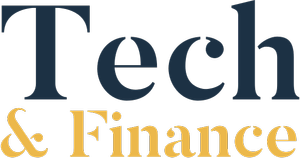If you’re thinking about getting a personal loan to help with your finances, it’s very important to know the differences between secured and unsecured loans. A secured loan means you have to provide something valuable, like your house or car, as a safety measure for the lender. On the other hand, an unsecured loan doesn’t require any property or assets from you. It’s based purely on how trustworthy your financial history says you are. This key distinction affects whether you’ll be approved for the loan, the interest rates you’ll get, and how much you can actually borrow.
Secured personal loans generally have better interest rates because there’s less risk for the lender thanks to the collateral you provide. But with unsecured personal loans, your interest rates might be higher. That’s because the lender bases their decision on your credit score and financial situation. Knowing these key points can help you decide which type of personal loan is best for your situation.
Understanding Personal Loans and Their Types
Personal loans let people borrow money for various needs. This includes paying off debts, improving homes, or managing big expenses. They fall into two main groups: secured and unsecured loans.
Definition of Personal Loans
Personal loans are deals where lenders give a specific sum of money to borrowers. In return, the borrower pays back this amount with interest over a set time. Getting a loan application approved means you can use the funds right away. The terms can be adjusted to fit the borrower’s financial situation.
Secured Personal Loans Explained
With secured personal loans, borrowers need to offer something valuable as collateral. This could be a car or a house. Collaterals make lenders feel safer, often leading to better interest rates and possibly bigger loans. The approval process includes checking both the collateral’s worth and the borrower’s ability to pay back.
Commonly, people use houses, cars, or other valuable items for this purpose.
Unsecured Personal Loans Explained
Unsecured personal loans don’t ask for collateral, which is great for those without big assets. These loans depend a lot on your credit score and financial past. Because the risk for lenders is higher, the interest rates are usually higher too. Those applying for unsecured loans must show good credit to get favourable terms.
The choice between secured and unsecured loans affects how you borrow money and what you can use it for. Knowing the difference helps make smart money choices and pick the right loan for your situation.
Key Differences Between Secured and Unsecured Loans
When picking out loans, it’s key to grasp their distinct features. These include collateral needs, interest rates, and how long you have to pay it back. Understanding these can help you make better money choices.
Collateral Requirements
What sets secured and unsecured loans apart is collateral. With secured loans, you must offer something valuable, like your house or car, as security. If you can’t pay back the loan, the lender can take this asset. Unsecured loans don’t ask for such a guarantee but look at how trustworthy with money you are.
Interest Rates Comparison
Secured loans often have lower interest because they are less risky for the lender. This safety comes from your collateral. Unsecured loans, though, have higher rates due to higher risk that comes without any security. Yet, a good credit score could get you a lesser interest rate even on unsecured loans.
Loan Amounts and Terms
Secured and unsecured loans differ in how much you can borrow and for how long. With secured loans, you can usually borrow more and for a longer time. This is because the lender has your collateral as a backup. Unsecured loans tend to offer less money and shorter payback periods to lower the lender’s risk.
| Criteria | Secured Loans | Unsecured Loans |
|---|---|---|
| Collateral | Required | Not Required |
| Interest Rates | Lower | Higher |
| Loan Amounts | Higher | Lower |
| Loan Terms | Longer | Shorter |
Using a loan calculator helps see likely payments clearly. Just plug in the loan amount, interest rate, and term. This tool can shape decisions that match your financial setting.
Choosing the Right Personal Loan for You
Choosing the right personal loan is vital for your financial health. You need to check your finances and know how your credit score affects your options. Mastering loan application techniques can help you get the best offer.
Assessing Your Financial Situation
First, examine your financial health in detail. Look at your income, debts, monthly spending, and savings. Knowing your finances helps you figure out how much you can borrow and pay back comfortably. Also, think about how a personal loan fits with your long-term money goals.
Understanding Your Credit Score
Your credit score is key when applying for a loan. It influences your eligibility and the interest rate you might get. Get your credit report from agencies like Experian, Equifax, or TransUnion. Check it for mistakes. Understanding your score lets you improve it if needed, getting you better loan terms.
Tips for Applying for a Personal Loan
For personal loan applications, prepare all needed documents, such as proof of income and ID. Compare loans from trusted lenders by looking at rates, terms, and fees. Use online calculators to work out monthly payments and the total cost of the loan. Always read the agreement thoroughly before signing. These steps will guide you through the process and help you find the right financial support for your needs.
A personal loan can help you manage unexpected expenses or achieve your financial goals with ease. By reviewing the terms and choosing a plan that fits your needs, you can borrow responsibly and confidently. To explore loan options and apply online, visit TSB Bank’s website!
